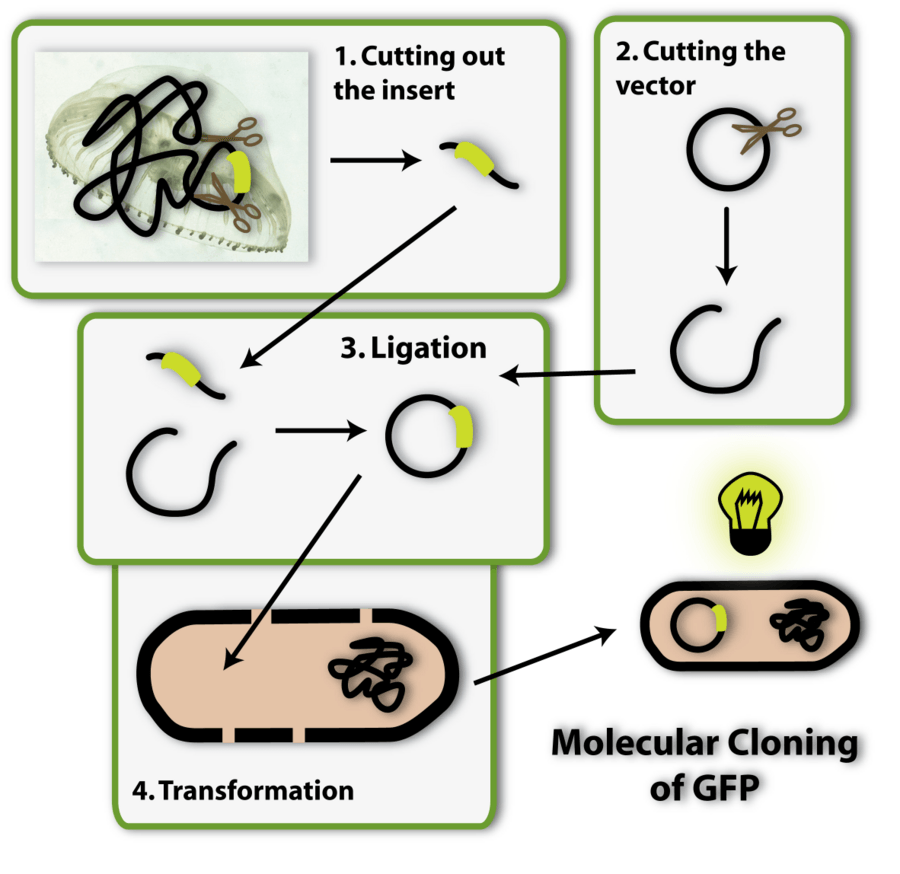Molecular Cloning
6/3/2014
JoVE Science Education Database. Basic Methods in Cellular and Molecular Biology. Molecular Cloning. Journal of Visualized Experiments, Cambridge, MA, doi: 10.3791/5074 (2014).
Molecular cloning is a set of methods, which are used to insert recombinant DNA into a vector – a carrier of DNA molecules that will replicate recombinant DNA fragments in host organisms. The DNA fragment, which may be a gene, can be isolated from a prokaryotic or eukaryotic specimen. Following isolation of the fragment of interest, or insert, both the vector and insert must be cut with restriction enzymes and purified. The purified pieces are joined together though a technique called ligation. The enzyme that catalyzes the ligation reaction is known as ligase.
This video explains the major methods that are combined, in tandem, to comprise the overall molecular cloning procedure. Critical aspects of molecular cloning are discussed, such as the need for molecular cloning strategy and how to keep track of transformed bacterial colonies. Verification steps, such as checking purified plasmid for the presence of insert with restrictions digests and sequencing are also mentioned.






